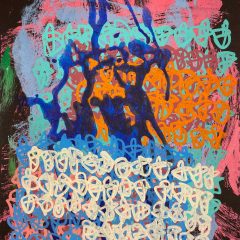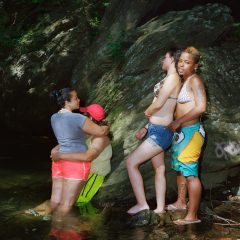Carpe diem quam minimum credula postero…
Seize the Day, putting as little trust as possible in the future
– Horace
Thirty-one artists of Latino descent were asked to respond to Horace’s famed verse. The results are seen in Diálogo 365: CARPE DIEM at City Hall, the largest exhibition of Latino art in the Philadelphia area. Presented by Casa de Venezuela and co-presented by Arts in City Hall and the Office of Councilwoman Maria Quiñonez-Sanchez, the artists were challenged to think beyond the brevity of now and consider carpe diem as a manifestation of a new tomorrow.
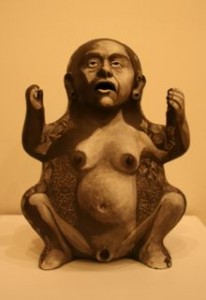
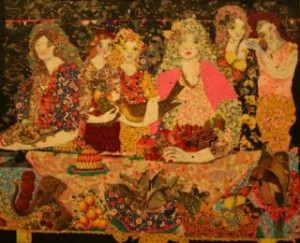
Most artists gave a personal interpretation, reflecting on their artistic career or personal ambition. Kukuli Velarde’s brilliant sculptures from her 2001 Isichapuitu series and Maria Berrio’s La Cena, 2012, a stunning mixed media piece showing women preparing dinner, highlight this interpretation, creating both a sense of introspection and communal relation.
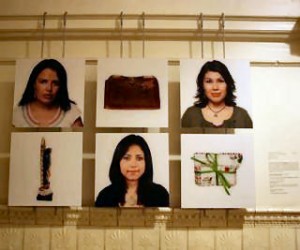
Those who took a global perspective present pieces relating to global warming, children’s rights, or immigration. A standout is Alejandra Regalado’s “In Reference To…, The New York Series,” 2012. Regalado photographed Mexican women immigrants, asked what their most cherished object was, and also photographed that chosen object. The results create a dynamic play of faces and things, stories wrapped together in a web of decontextualized white backgrounds. The piece may be the best representation of the exhibition’s intent, celebrating and quietly challenging carpe diem.
Another highlight is Maria Schneider’s “Just Go (To The Universe),” 2012, a canvas abstracted with burlap and guaze depicting crumbling buildings and people leaving. The gritty texture and feeling of uncertainty make the piece an emotive work, full of action in its stillness.
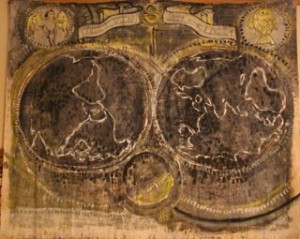
Grittiness follows into Ana Vizcarra Rankin’s piece “Benefit Dinner Plates (Five Disks),” 2012. Playing with the perception of distance and space, while creating a free-hand map from memory, Rankin references street art styles and print-making elements in this large mixed media work.
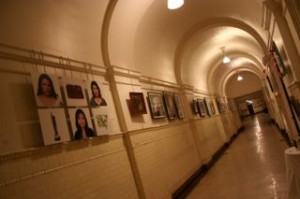
The space in which the works were presented was a challenge to the exhibition. Works displayed in the large reception room were the luckiest, as they had beautiful light and ample space. However, a narrow hallway with a half-tiled wall housed the majority of the works. These are hung so that visitors shorter than six foot have to crane their necks to see.
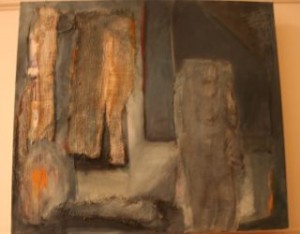
This too-high location erased much of the power of Ruben Millares’ “Number Field 1, 2, 3.” Each serigraph is filled with strips of numbers (all over 75,000) hand-picked from financial documents, creating overwhelming — yet beautiful — pieces that challenge how we view such large digits.The pieces become more complex with time, the viewer pondering how to relate to these decontextualized figures.
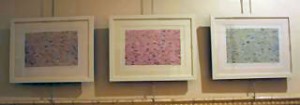
Conceptually provoking, the exhibition as a whole struggled to live up to its premise — a point echoed in the introductory text’s abundant use of descriptive phrases such as “lofty challenge” and “ambitious project.” While carpe diem can be interpreted in many ways, the viewer is left wondering if some of the artists were trying to force created works into the exhibition’s context, rather than creating toward that context.
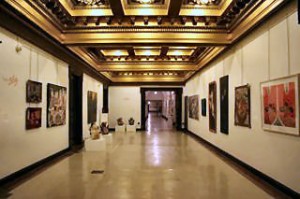
While the exhibition is successful in presenting a diverse array of themes, styles, and mediums, many works fail to challenge or are too referential, taking familiar folk-art themes but lacking a new interpretation. Still, beautiful works are presented, and particularly for people new to contemporary Latino art, the exhibition provides an introduction to pertinent styles and themes.
The show is up at City Hall through Dec. 7.



